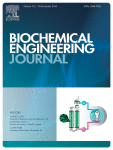|
Authors
Román, R.; Miret, J.; Roura, A.; Casablancas, A.; Lecina, M. , Cairó, J. J , Cairó, J. J
|
Abstract
Unlike other cell lines used in industry, HEK293 have not well-established metabolic markers yet for the selection of positive transfected cells expressing recombinant proteins. Three different metabolic markers were explored and assessed in HEK293 to avoid antibiotic-based selection methods. Firstly, PAH gene (Phenylalanine Hydroxylase) was tested as selection marker in tyrosine free medium exploring the potential of the natural tyrosine auxotrophy found in HEK cells. Secondly, two HEK293 mutant cell lines defectives in Thymidylate Synthase (TYMS) and Glutamine Synthetase (GS) were generated using CRISPR/Cas9, and the knocked-out genes were used as selectable markers. Efficiency of selection and eGFP production were evaluated for each selection marker by FACS and compared with the performance based on puromycin selection. Selection efficiencies of 98.60% and 99.95% eGFP + cells were found for PAH and GS selection markers respectively, comparable to puromycin-based selection (99.86% eGFP+). TYMS-based selection system achieved 87.40% eGFP + cells in transfected cultures after one week. Regarding eGFP expression levels, PAH system showed the highest specific production (4,7 × 10−4rfu/cell) followed by GS and puromycin (about 2.0 × 10−4rfu/cell and 2.7 × 10−4rfu/cell, respectively). Inhibitors were then used to increase selection astringency to enhance productivity in selected pools. Eventually, the GS system was used to produce human interferon gamma (hINFγ) as an additional proof of concept. Growth kinetics, advantages and intrinsic limitations of each strategy are assessed and discussed.
|

WoS
Scopus
Altmetrics
 
|
